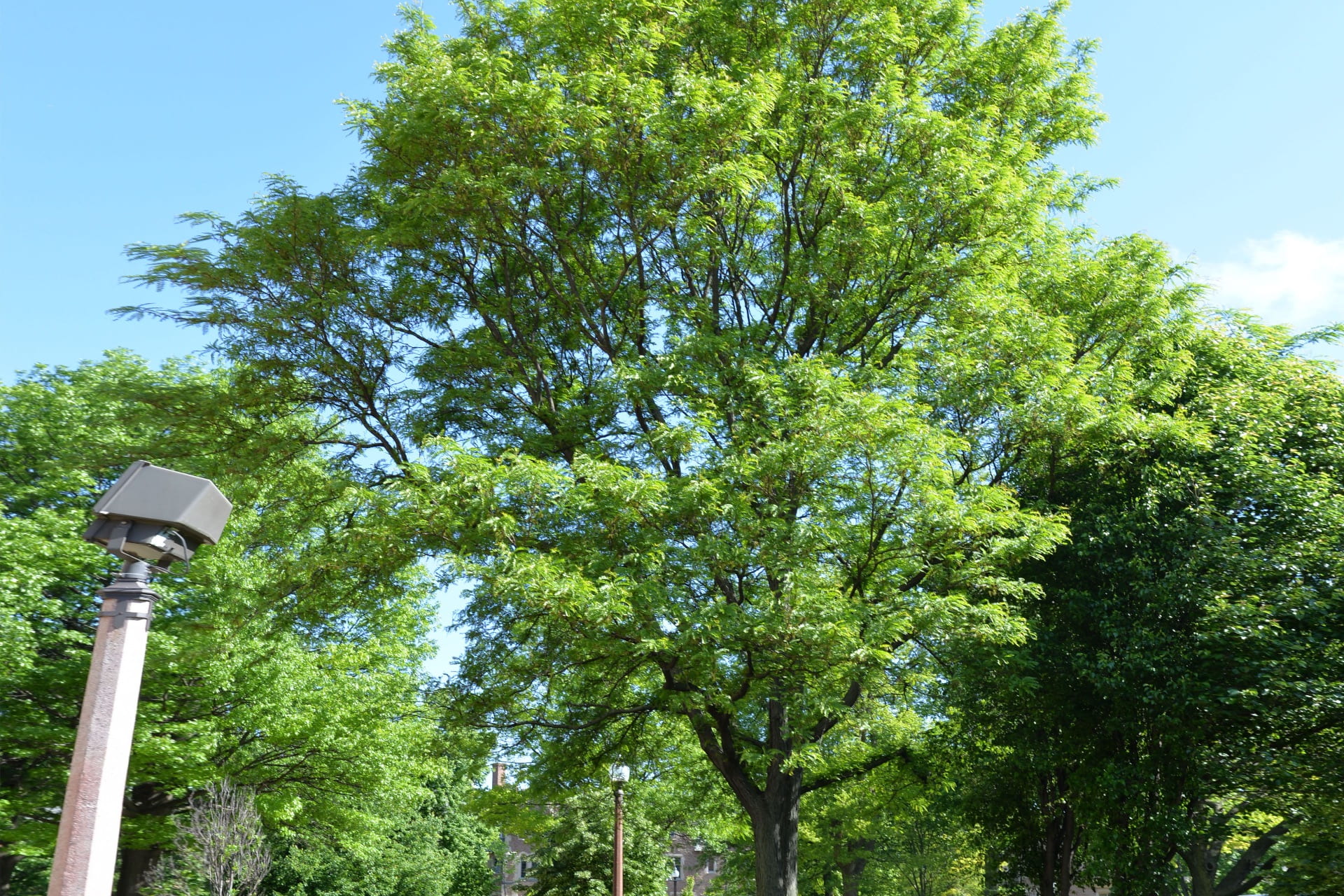Common Thornless Honeylocust
Arbor walk #28, Treekeeper ID #1610

This is a native plant, but if found in nature, its bark would likely be covered in long, sharp thorns. Arborists tend to plant this natural, thornless variant of the tree to allow people to see its beauty without obtaining injuries.
While the spring-time flowers of the Thornless Honeylocust are not easily seen, the 8” long fruit are highly visible. Being part of the bean family (Fabaceae), this tree produces legumes. The fruit contain seeds and a sticky-sweet substance that resembles honey in texture. Another notable feature of the Honeylocust is its distinct bark. Unlike most trees, this bark consists of very long, defined strips, as if they could be easily peeled off.
More infromation on the Common Thornless Honeylocusts in our Arboretum here!
| Common Name(s) | Common Thornless Honeylocust |
|---|---|
| Latin Name | Gleditsia triacanthos f. inermis |
| Indigenous Name(s) | |
| Cultivar/Variety | |
| Commercial Name |